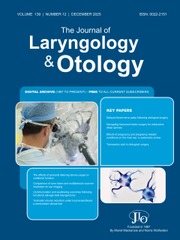No CrossRef data available.
Article contents
Molecular differences in the nasal microenvironment of chronic rhinosinusitis with nasal polyposis: a systematic review
Published online by Cambridge University Press: 30 July 2025
Abstract
The present review aims at an insight into the pathophysiology of chronic rhinosinusitis with nasal polyposis through the combination of three tissue sources: (1) nasal polyp, (2) neighboring non-polypoid mucosa (MS) and (3) healthy controls.
The primary outcomes included three lists of molecules (1) those significantly different between nasal polyp, neighboring non-polypoid mucosa and controls (2) those up/downregulated in nasal polyp, but comparable between MS and controls and (3) those comparable between nasal polyp and neighboring non-polypoid mucosa, but different between NP and controls.
Ten studies investigating a large variety of 68 molecules presented comparisons between nasal polyp and neighboring non-polypoid mucosa in endotype-specified populations. Comparisons between nasal polyp and neighboring non-polypoid mucosa are approached separately for eosinophilic/non-eosinophilic chronic rhinosinusitis with nasal polyposis . The small number of studies prohibits a meta-analysis.
Inclusion of neighboring non-polypoid mucosa in future studies may provide a bias-free list of the molecules that contribute to the actual pathogenesis and preservation of nasal polyps within the chronic rhinosinusitis inflammatory environment.
Information
- Type
- Review Article
- Information
- Copyright
- © The Author(s), 2025. Published by Cambridge University Press on behalf of J.L.O. (1984) LIMITED.
Footnotes
Maria Riga takes responsibility for the integrity of the content of the paper

